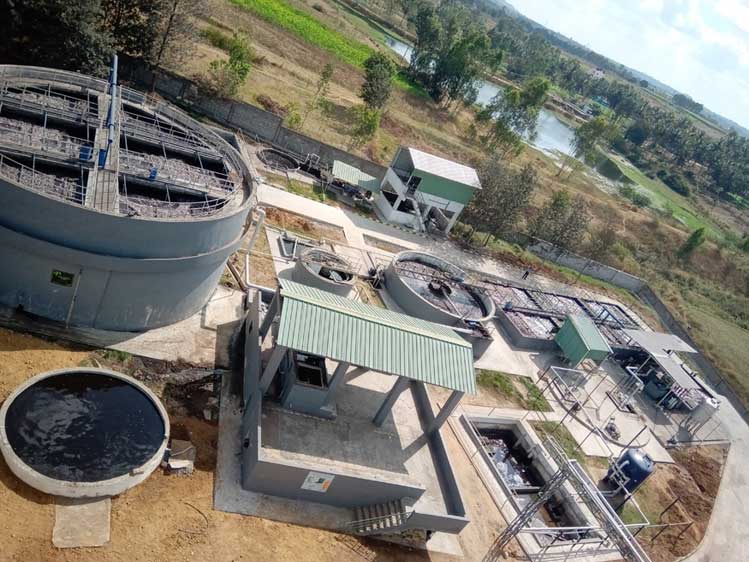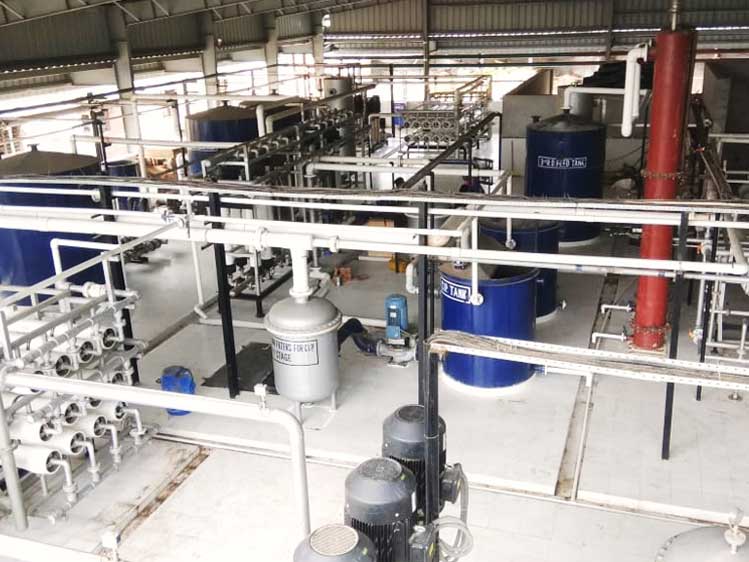Textile
In Indian context , textile industry is one of the oldest and critical industries in Indian economy. It accounts for around 2% of GDP , 8% of revenue collections, 14% of industrial production and 12% of total manufacturing export earnings.
As far as textile industry in concerned , declining ground water table due to overexploitation and Zero Liquid Discharge (ZLD) policy implemented by the Central Pollution Control Board (CPCB) , the textile processing units have been inclined to adopt efficient water use and management in the textile industries. Out of various activities in textile industry, dyeing contributes about 70% of pollution. . It is well known that cotton mills consume large volume of water for various processes such as sizing, desizing, scouring, bleaching, mercerization, dyeing, printing, finishing and ultimately washing.
The Textile business in Asian nation typically, once business enterprise, is that the lone business that has made large work for each precocious and incompetent add materials. The Textile business keeps on being the second-biggest work making space in Asian nation. It offers direct work to over thirty five million within the country. In Indian setting , material business is one in all the foremost established and basic ventures in Indian economy. It represents around a pair of of value , V-E Day of financial gain assortments, Bastille Day of contemporary creation and 12-tone system of all out grouping transmit profit. As per the Ministry of Textiles, the portion of materials in absolute fares throughout April–July 2010 was eleven.04%. throughout 2009–2010, the Indian material business was fastened at US$55 billion, sixty fourth of that administrations native demand. In 2010, there have been a pair of,500 material weaving process plants and four,135 material finishing industrial facilities within the entireness of Asian nation. As indicated by AT Kearney's 'Retail attire Index', Asian nation was positioned because the fourth most encouraging business for vesture retailers in 2009.



India is 1st in worldwide jute creation and offers sixty three of the worldwide material and article of vesture market. Asian nation is second in worldwide material grouping and what is more second in silk and cotton creation. 100% FDI is permissible through programmed course in material space. Rieter, Trutzschler, Saurer, Soktas, Zambiati, Bilsar, Monti, CMT, E-land, Nisshinbo, Marks and Herbert Spencer, Zara, Promod, Benetton, and denim square measure some of the unfamiliar material organizations place or operating in Asian nation.
To the extent textile business in involved , declining spring water table attributable to development and nil Liquid Discharge (ZLD) strategy dead by the Central Pollution electrical device (CPCB) , the fabric getting ready units are slanted to receive effective water use and also the executives within the material ventures. Out of various exercises in material business, coloring contributes regarding seventieth of contamination. . it's notable that cotton plants burn-through huge volume of water for various cycles, for instance, estimating, de-measuring, scouring, blanching, mercerization, coloring, printing, finishing and eventually laundry.
| Cotton Coloring | Polyester Dyeing | Denim Dyeing | |
|---|---|---|---|
| pH | 6 to 10.0 | 6 to 10.0 | 6 to 10.0 |
| COD | 250-20,000 | 300-1200 | 1500-6000 |
| TDS | 2100– 15000 mg/l | 2000– 5000 mg/l | 4000– 8000 mg/l |
SOLUTION-
Each type of waste can be solved by taking into consideration the following factors:
Quantum of effluent, Composition of the effluent, &Pollution control norms to be met.
As there is no uniform or standard method to treat such effluent, considering wide fluctuations in effluent parameters, we need to adopt set and sequence of treatment process to achieve best possible results. The efficient and best process is the one which keeps the running cost at minimum possible level and is easy to operate.
HYPERFILTERATION PVT.LTD ZERO LIQUID DISCHARE BASED EFFLUENT TREATMENT AND RECYCLING SYSTEM
Year 2000 marked the commencement of our company with commitment to protect the environment through unique design plants, heavy duty construction and resolve to keep all plants in running condition through efficient services. Our specialization in zero liquid discharge based effluent recycling system for TEXTILE INDUSTRY, speaks volumes about our achievements in terms of modified designs in ETP and ZLD system to achieve 95-98 % of recovery. Our perfectly designed plants start with intensive study of dyes / effluents and its usage pattern and culminates into heavy duty hardware, incorporating world class components and instruments.
Zero Liquid Discharge (ZLD) may be a final up-to-date effluent treatment methodology developed to totally eliminate all liquid discharge from a system. The goal of a zero liquid discharge system is to chop back the quantity of waste matter that wants any treatment, economically method waste matter and manufacture a clean stream acceptable for utilize. The ZLD System removes dissolved solids (mainly salt) from the waste matter and returns pure water to the method. Reverse diffusion (membrane filtration) is employed to concentrate pretreated waste stream and come the clean permeate to the method, funnel the reject to associate evaporator, and send the gaseous concentrate to a crystallizer or spray the atmospheric phenomenon from evaporator come to, the method.
In order to stop pollution of stream water and groundwater ,Central Pollution electrical device (CPCB) has created the ZLD system necessary for all the extremely polluting industries together with Textile colouring and Bleaching industries, Tanneries etc. that uses a substantial quantity of salt within the method and consumes a large amount of water. The ZLD system ensures recovery of water & salt from the waste matter therefore preventing pollution of River/groundwater. These bleaching and colouring industries square measure extremely water-intensive processes; generates a large amount of effluent. the standard activated sludge method and different chemical treatment ways won't bring the effluent to the specified discharge standards. primarily in TDS and it ought to be but 2100mg/l. thus the ZLD thought was introduced in Hyper Filteration.
Regarding ninety fifth of permeate water is recovered from the artificial language plant in ZLD system for textile process industries. Also, salt and atmospheric phenomenon square measure recovered from MVRE / MEE and remaining final reject of zero.5 to a quarter is discharged through star evaporation pan. Presently advanced treatment element like Agitated skinny Film Drier (ATFD) is provided to treat the ultimate reject.
HYPER ENSURES THE FOLLOWING:
SUMMARY
Ground water table is depleting speedily. Asian nation is facing potable crisis in several elements of the country. The textile industries would like water for its operations and reciprocally discharge effluents that square measure polluting the small quantity of water in already depleting groundwater level. it's the ethical and moral responsibility of industries to scale back, recover and recycle the water and work towards achieving ‘Zero Liquid Discharge’ i.e. the quantity of water used is all recycled back within the system. With adopting latest technology and constant innovation zero liquid discharge isn't solely possible however conjointly cheap. it's a boon for setting, also as economically viable and necessary for textile industries to adopt an equivalent for his or her property production.